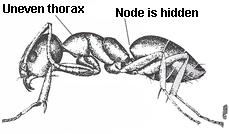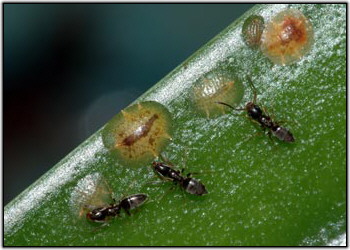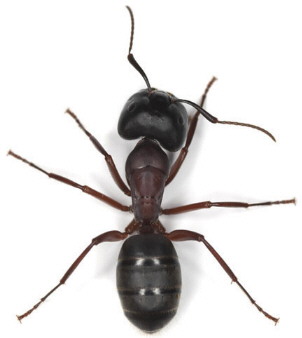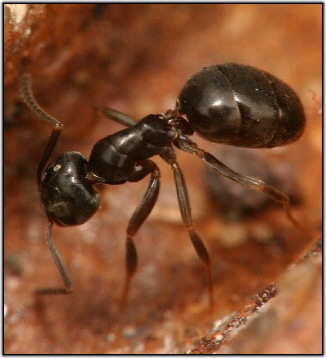Odorous House Ant
Identification
This ant gets its name from the strong, rotten coconut-like smell it gives off when crushed. These tiny insects range in size from one-sixteenth of  an inch to one-eighth of an inch long. They are anywhere from dark brown to black in colour. Their petiole has one node which is hidden by their abdomen. Their thorax is uneven when viewed from the side.
an inch to one-eighth of an inch long. They are anywhere from dark brown to black in colour. Their petiole has one node which is hidden by their abdomen. Their thorax is uneven when viewed from the side.
Odorous house ants like to eat sweets, especially melon. They also feed on both dead and living insects, favouring aphids and scale honeydew. Typically living for several years, these ants make their homes in exposed soil and wall cracks. These ants do not pose a public health risk, but they can contaminate food and should be avoided. They tend to have large colonies, with up to 10,000 workers and many queens.
Odorous house ants travel in both wandering patterns and set trails. Their trails are common along branches of trees, foundations, sidewalks, baseboards, and edges of carpets. When disturbed, they become very erratic with their abdomens raised in the air.

Prevention
Eliminate standing water. Pests such as odorous house ants are attracted to moisture. Keep tree branches and other plants cut back from the house. Sometimes pests use these branches to get into your home. Make sure that there are no cracks or little openings around the bottom of your house. Sometimes pests use these to get into your home. Make sure that firewood and building materials are not stored next to your home. Pests like to build nests in stacks of wood.



